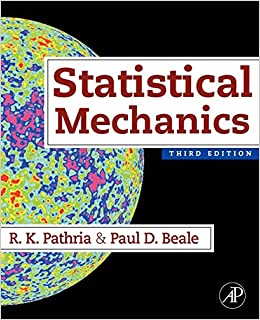Show that, for a statistical system in which the interparticle potential energy (u(boldsymbol{r})) is a homogeneous function
Question:
Show that, for a statistical system in which the interparticle potential energy \(u(\boldsymbol{r})\) is a homogeneous function (of degree \(n\) ) of the particle coordinates, the virial \(\mathcal{V}\) is given by
\[
\mathcal{V}=-3 P V-n U
\]
and, hence, the mean kinetic energy \(K\) by
\[
K=-\frac{1}{2} \mathcal{V}=\frac{1}{2}(3 P V+n U)=\frac{1}{(n+2)}(3 P V+n E)
\]
here, \(U\) denotes the mean potential energy of the system while \(E=K+U\). Note that this result holds not only for a classical system but for a quantum-mechanical one as well.
Fantastic news! We've Found the answer you've been seeking!
Step by Step Answer:
Related Book For 

Question Posted:





